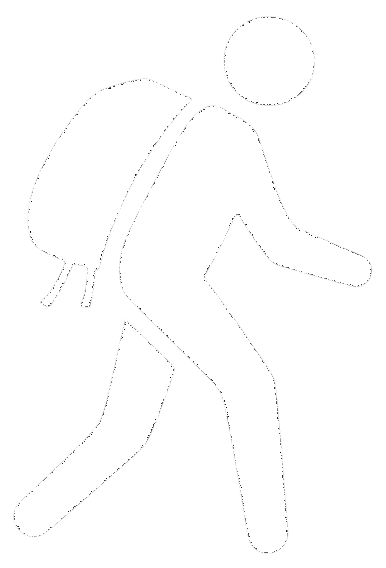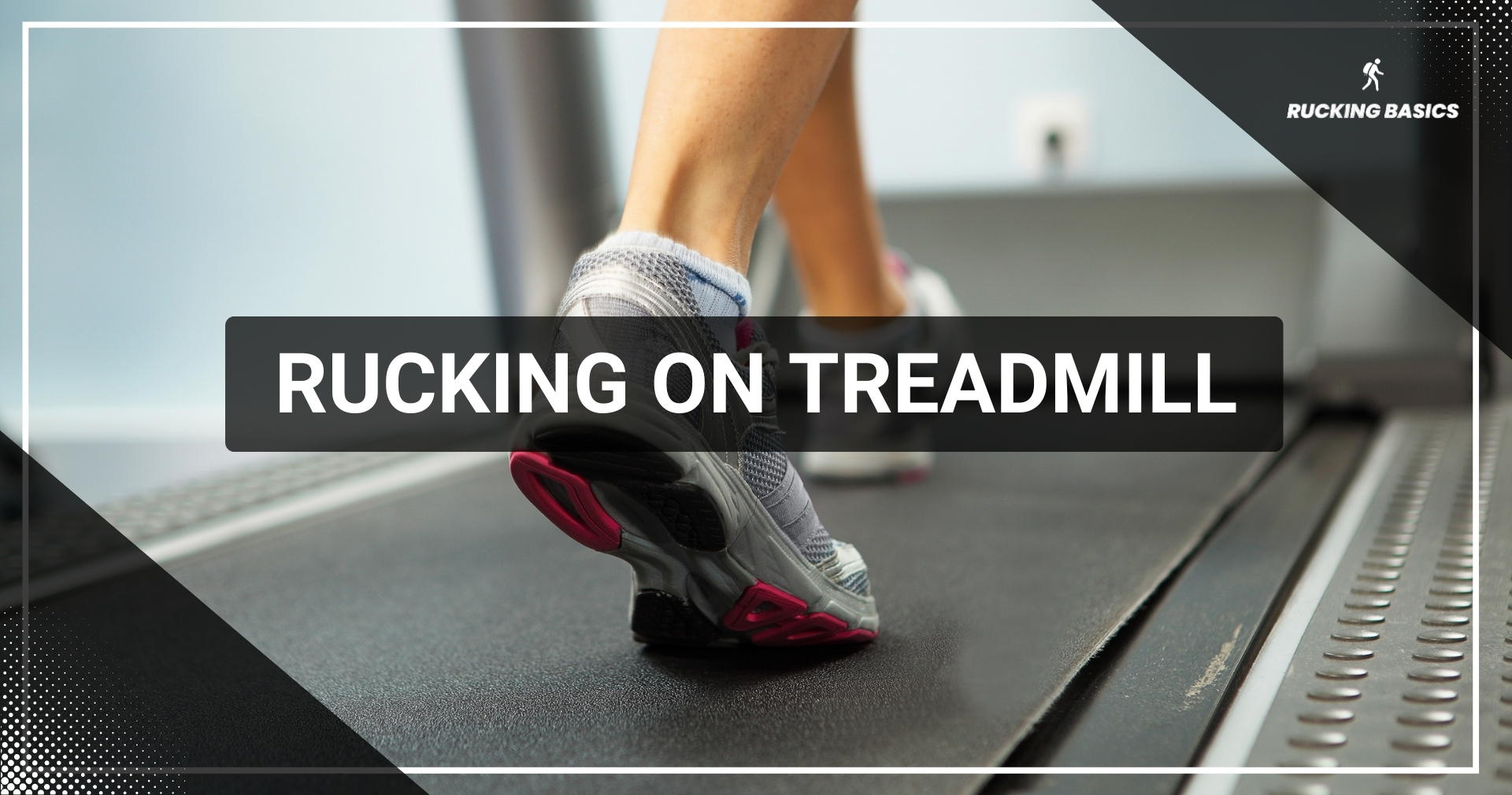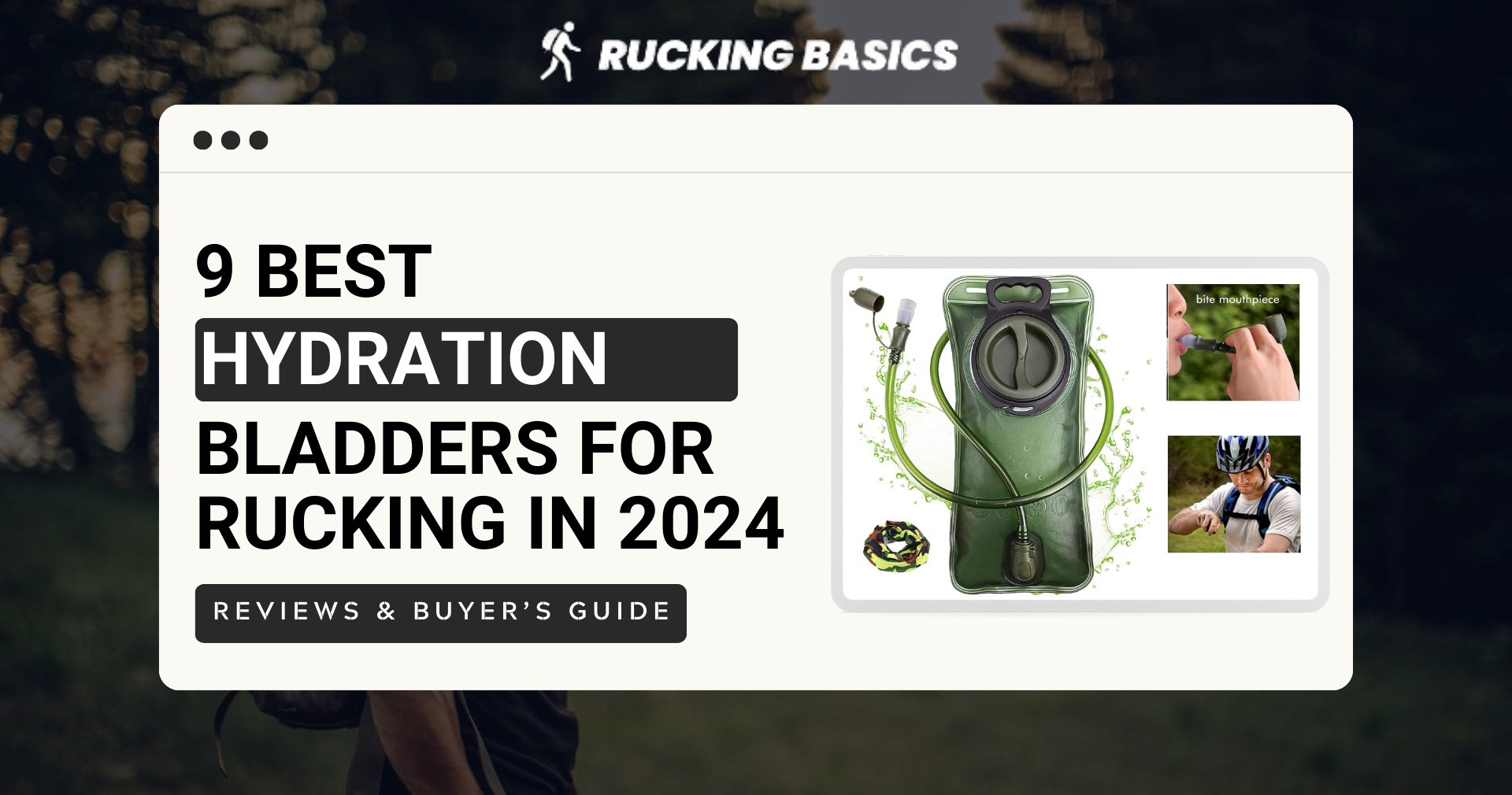There is no doubt that rucking is one of my favorite ways to stay fit and have fun at the same time. Whether you’re a seasoned rucker or just getting started, you already know that rucking delivers results.
But let’s face it — sometimes, outdoor rucking isn’t practical. Maybe it’s pouring rain, blisteringly hot, or the trail is simply too far away. That’s where rucking on a treadmill becomes your go-to solution, and trust me, it can transform your fitness level.
With treadmill rucking, you control your environment, pace, and even the incline—giving you the perfect blend of convenience and consistency.
In this simple treadmill training guide, we’re going to explore everything you need to know about treadmill rucking. We’ll dive into how to set up your equipment, choose the right weight, adjust your pace and incline, and keep the workout both effective and enjoyable.
Benefits of Rucking on a Treadmill
The most obvious advantage of rucking indoors over outdoor rucking is the controlled environment.
When you’re doing weight training on a treadmill, you don’t need to worry about unpredictable weather, uneven terrain, or unexpected obstacles like tree roots or loose gravel. You have a steady, even surface that lets you focus purely on your workout without distractions or interruptions. This is particularly important to those working on improving form or having a specific training goal (for example, if you are trying to keep your heart rate consistently high).
Additionally, if you’re wondering about the rucking workout and its benefits for total-body strength, the answer is clear. Rucking builds endurance and strength, which can contribute to better running performance. By strengthening key muscles, it improves stability and speed, making it an ideal cross-training exercise.
Another big benefit is the ability to track your progress with precision. Most treadmills are equipped with built-in metrics that provide real-time feedback on key performance indicators. Those are speed, distance, calories burned, and even heart rate (although I wouldn’t count on that heart rate monitor; it’s not always very accurate.)
I find the treadmill’s incline setting awesome. You can mimic those tough uphill rucks or hiking trails while staying indoors. Keep things easy on a flat surface for longer walks, or turn up the incline when you’re ready to really feel the burn.
Additionally, if you’re wondering does rucking improve your running abilities, the answer is yes. Rucking builds endurance and strength, which can contribute to better running performance. Rucking helps strengthen the muscles that are crucial for maintaining speed and stability during runs, making it a fantastic cross-training exercise.
In short, treadmill rucking is a customizable workout perfect for those days when heading outside isn’t in the cards.
The Drawbacks of Treadmill Rucking
I’m a huge fan of treadmill rucking, and my clients can confirm that I often recommend it to them, but nothing is perfect, right?
These are some of the drawbacks:
- Repetitive Motion: Walking without terrain changes makes your workout feel repetitive, leading to boredom and mental fatigue.
- Limited Space: Unlike outdoor rucking, which allows you to cover vast distances, treadmills confine you to a limited area. This can make longer sessions very monotonous.
- Reduced Fresh Air and Sunlight: Rucking indoors means you miss out on the fresh air and vitamin D from natural sunlight.
- No Real-World Conditions: Treadmill training doesn’t prepare you for real-world rucking challenges. On the next ruck march, you will encounter wind resistance, weather variations, and potentially tricky terrain—something we cannot simulate indoors.
- Less Mental Health Benefits: Any physical activity is good for our minds, but studies have shown that spending time in nature reduces stress, boosts mood, and improves mental clarity. While indoor rucking provides physical benefits, it lacks one of my favorite parts of rucking—nature.
However, these drawbacks are not unconquerable, so don’t let them discourage you. Treadmill workout is still a fantastic option for staying fit.
Equipment for Rucking on a Treadmill
I’ve noticed that people often make one mistake regarding treadmill rucking — they underestimate the importance of the equipment. Yes, the controlled indoor environment reduces some unpredictability of outdoor rucking. Nevertheless, you need to gear up properly to get the most out of your session and avoid injuries.
First and foremost, let’s talk about the rucking rucksack or rucking backpack. Your pack must fit well and distribute weight evenly. A poorly fitted training rucksack will strain your body, no matter where you’re rucking. Look for a rucksack with:
- Padded straps
- Chest and waist belts
- Sternum strap
The training weight vest is also a very good choice for indoor rucking because you need fewer compartments and pockets than when you go in nature. In that case, weighted vest can be handier and you can later use it for strength training, too.
Next, your footwear is equally important. You don’t need bulky military boots like when you go on rocky trails, but you need a good pair of rucking shoes to keep you comfortable throughout the workout.
If you’re hunting for an option that works both indoors and out, this GORUCK Rough Runners review breaks down a versatile shoe built for durability and comfort.
You can also add insoles for even better comfort and stability.
If you’re specifically looking for the best shoes to pair with your rucking sessions, check out this GORUCK Mackall review. It highlights a shoe designed for rugged terrains but equally supportive and comfortable for indoor rucking sessions.
As for other gear, consider buying:
How to Choose the Right Weight?
I don’t like generalizations when it comes to fitness and sports, so in order to determine the ideal weight, you need to consider your body weight, physical fitness level, experience, goals, and many other factors.
The general rule of thumb for outdoor rucking is that beginners should start with no more than 10% of their body weight. For example, if you weigh 150 pounds, you’ll want to start with about 15 pounds. When we talk about weighted backpack training on a treadmill, you can start with a slightly higher percentage because it is safer. Still, the factors mentioned earlier are more important, but if you are unsure, you can stick to this rule.
Trust me, it’s easy to get over-ambitious, yet going too heavy too soon can lead to an injury and discourage you from rucking.
For intermediate ruckers, carrying 15% to 20% of body weight is a good range, and advanced ones can increase weight to 25% or more, but only if you can maintain good form throughout your session.
Setting the Correct Pace and Incline
Each treadmill is different, and I don’t know which one you use, so don’t strictly follow these tips, but let them serve as a guideline.
I usually recommend starting with a comfortable pace—around 3 mph is just fine for the beginning. Get into a rhythm without pushing too hard. You are only one button press away from increasing the speed, so adjust if you feel it is too fast or too slow for you.
Maintaining an appropriate rucking pace is crucial to optimizing your treadmill rucking workout. Keeping the right speed and adjusting incline effectively will ensure you challenge your body while preventing injury.
Want to ensure you’re staying in the best range for cardiovascular health and fat burn? Learning about rucking heart rate zones can help you manage your intensity while staying safe.
Start with a 2% to 3% incline. If you want a serious rucking workout, you can increase it to 5% or even 10%. If you significantly increase the incline, prepare for serious glute, hamstring, and calf soreness the next day.
Safety Tips for Rucking on a Treadmill
Here are some key safety tips to keep in mind while rucking on a treadmill:
- Maintain Proper Posture: Keep your shoulders back, chest up, and core engaged. Avoid slouching or leaning forward.
- Use the Safety Features: Always use the treadmill’s emergency stop or clip the safety key to your clothing. If you feel off-balance or fatigued, knowing how to quickly stop the treadmill can prevent falls and injuries.
- Focus on Foot Placement: Keep your strides steady and controlled. Avoid shuffling your feet; that will throw off your balance.
- Pay Attention to Fatigue: As your session progresses, fatigue will set in, and your form may start to break down. When you feel tired, reduce your pace or take a short break rather than pushing through with poor posture.
- Hydrate: Even though you’re indoors, you’ll still sweat. Keep a water bottle nearby to stay hydrated throughout your session. You can also bring some candy or other source of energy.
How to Keep Rucking Fun on a Treadmill?
One of the best ways to beat boredom is to turn your ruck into an entertainment session.
I’ve found that catching up on my favorite NFL, tennis, and other podcasts while rucking makes the time fly by. You can do the same, binge watch a TV show or listen to an audiobook.
Another way to keep things interesting is by using virtual hiking apps or scenic running programs that simulate outdoor environments. These apps feature trails from around the world.
For those who want even more inspiration and ideas, check out books on rucking for strategies to keep your workouts engaging and effective.
If you’re competitive, tracking your progress and setting weekly or monthly challenges can be another great way to keep things fun. Apps allow you to join online rucking communities where you compete with others for fun challenges.
For those who enjoy interval training (HIIT), switching up your routine with inclines and different speeds can break up the monotony as well.
Of course, you can listen to music or do whatever you like to make the workout less monotonous.
Wrapping Up
Treadmill rucking is a fantastic way to stay consistent with your fitness goals, no matter what life throws your way.
Whether you’re dodging bad weather, juggling a packed schedule, or simply prefer the comfort of an indoor setting, treadmill rucking offers the flexibility you need. It’s a convenient option that fits into your life, not the other way around.
So, treadmill rucking has something to offer for everyone. It’s an adaptable, effective, and low-impact workout. Now it’s time to take the next step: put on your rucksack and stand on the treadmill with confidence.
We cheer for you!
Frequently Asked Questions (FAQs)
Is rucking on a treadmill safer for your joints than rucking outdoors?
Treadmill rucking is generally easier on the joints because the surface is softer and more even compared to outdoor trails. It reduces the impact on the knees, ankles, and hips, especially when combined with good posture and proper footwear.
Can treadmill rucking help improve endurance for outdoor rucking?
Absolutely, treadmill rucking can build cardiovascular endurance that will transfer to outdoor rucking. Adjusting the incline and duration allows you to simulate outdoor conditions and build the stamina needed for longer hikes or outdoor rucks.
What features should you look for in a treadmill for rucking?
Look for a treadmill with a sturdy frame, adjustable incline, and a wide belt to give you enough space for comfortable strides. Built-in tracking features for distance, speed, and heart rate are also helpful for monitoring progress.
References
Shaughnessy M, Michael K, Resnick B. Impact of treadmill exercise on efficacy expectations, physical activity, and stroke recovery. J Neurosci Nurs. 2012 Feb;44(1):27-35. doi: 10.1097/JNN.0b013e31823ae4b5. PMID: 22210302; PMCID: PMC3249605.
Pereira NM, Araya MJPM, Scheicher ME. Effectiveness of a Treadmill Training Programme in Improving the Postural Balance on Institutionalized Older Adults. J Aging Res. 2020 Jan 30;2020:4980618. doi: 10.1155/2020/4980618. PMID: 32148960; PMCID: PMC7013321.
Earl-Boehm JE, Poel DN, Zalewski K, Ebersole KT. The effects of military style ruck marching on lower extremity loading and muscular, physiological and perceived exertion in ROTC cadets. Ergonomics. 2020 May;63(5):629-638. doi: 10.1080/00140139.2020.1745900. Epub 2020 Apr 2. PMID: 32191155.








